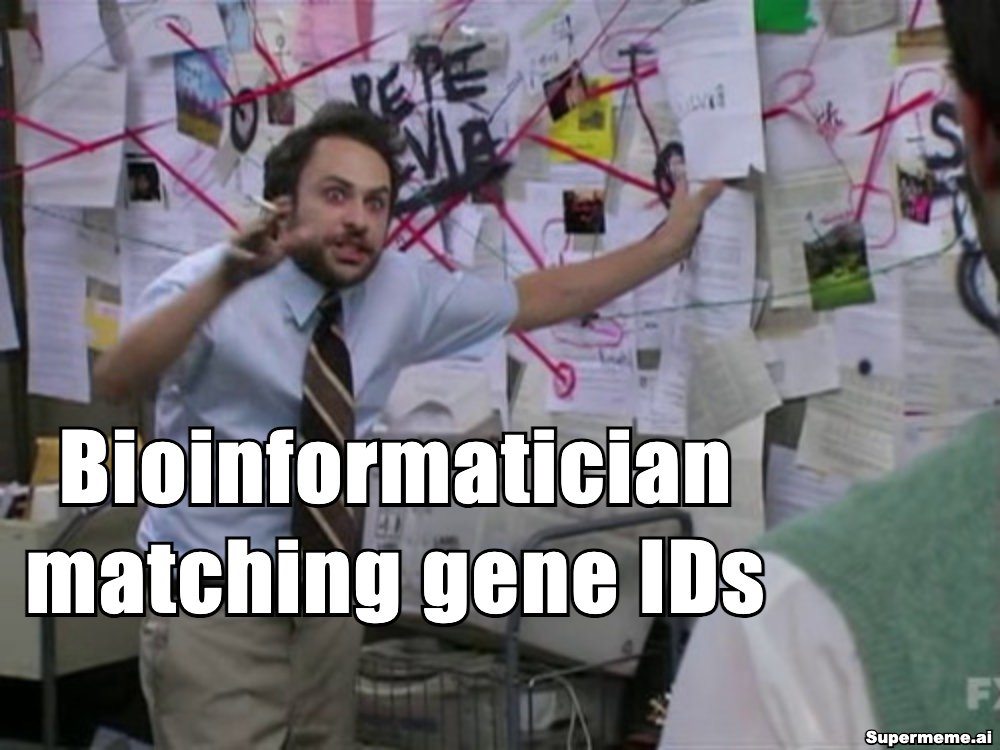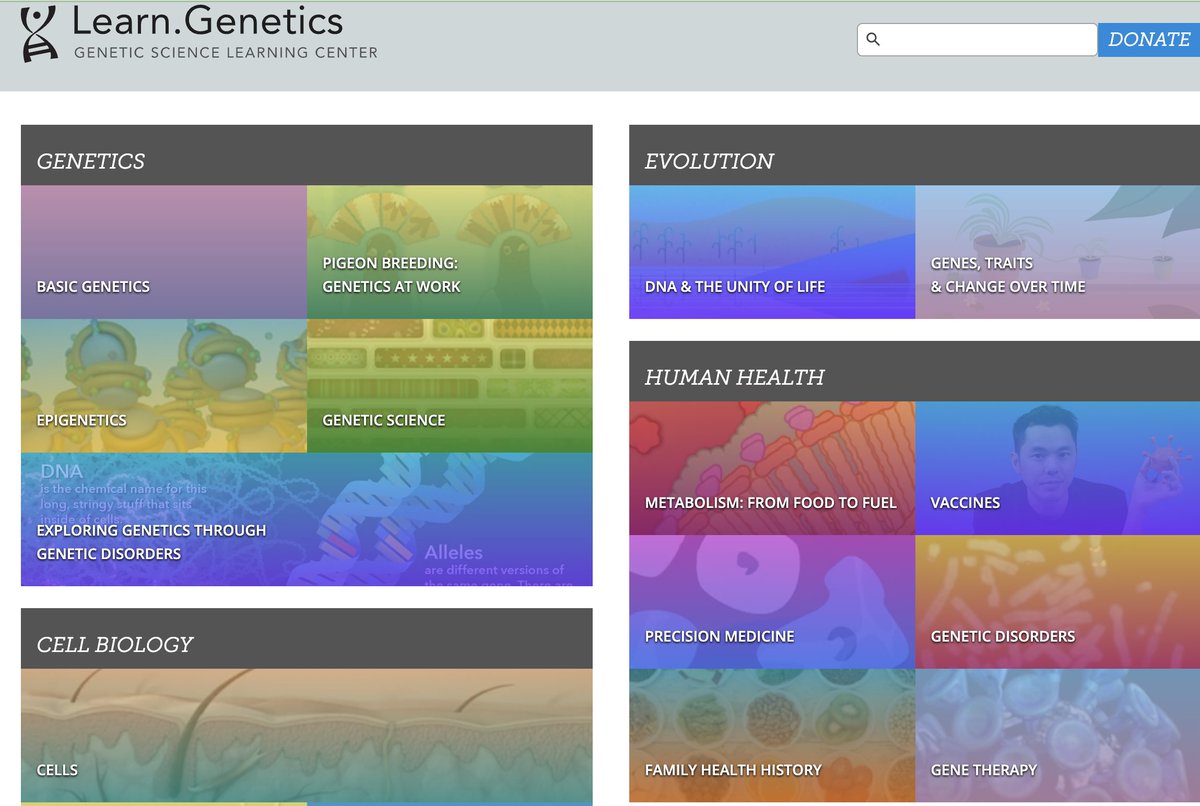1/ You’re merging gene data across tools. Suddenly nothing matches.
ENSEMBL, ENTREZ, TP53, P53…
Why so many gene IDs?
ENSEMBL, ENTREZ, TP53, P53…
Why so many gene IDs?

2/
Gene ID chaos is real.
One gene, three names: ENSEMBL ID, ENTREZ ID, gene symbol.
Different formats, same biology—but not always.
Gene ID chaos is real.
One gene, three names: ENSEMBL ID, ENTREZ ID, gene symbol.
Different formats, same biology—but not always.
3/
ENTREZ ID is a stable integer from NCBI.
Example: TP53 = 7157
ENTREZ ID is a stable integer from NCBI.
Example: TP53 = 7157
4/
ENSEMBL ID is versioned and specific.
TP53 = ENSG00000141510
Used in Ensembl, Gencode, and many RNA-seq pipelines.
ENSEMBL ID is versioned and specific.
TP53 = ENSG00000141510
Used in Ensembl, Gencode, and many RNA-seq pipelines.
5/
Then you have gene symbols.
TP53 is the official name.
But some still write P53 (not wrong—just outdated).
Then you have gene symbols.
TP53 is the official name.
But some still write P53 (not wrong—just outdated).
6/
Here’s the problem:
One ENSEMBL ID can link to multiple symbols.
One symbol can map to many ENSEMBL IDs.
Now you’re stuck.
Here’s the problem:
One ENSEMBL ID can link to multiple symbols.
One symbol can map to many ENSEMBL IDs.
Now you’re stuck.
7/
Why so messy?
Gene annotations evolve.
A new transcript is discovered.
A gene gets renamed.
Science moves, but your data might not.
Why so messy?
Gene annotations evolve.
A new transcript is discovered.
A gene gets renamed.
Science moves, but your data might not.
8/
How do you fix this?
Use biomaRt in R to map IDs reliably.
It pulls live data from Ensembl. Here’s a working example:
How do you fix this?
Use biomaRt in R to map IDs reliably.
It pulls live data from Ensembl. Here’s a working example:
9/
library(biomaRt)
mart <- useMart("ensembl", dataset = "hsapiens_gene_ensembl")
getBM(attributes = c("ensembl_gene_id", "entrezgene_id", "external_gene_name"),
filters = "ensembl_gene_id",
values = "ENSG00000141510",
mart = mart)
library(biomaRt)
mart <- useMart("ensembl", dataset = "hsapiens_gene_ensembl")
getBM(attributes = c("ensembl_gene_id", "entrezgene_id", "external_gene_name"),
filters = "ensembl_gene_id",
values = "ENSG00000141510",
mart = mart)
Returns TP53, 7157, and ENSEMBL ID.
10/
Prefer the browser?
Use Ensembl BioMart: ensembl.org/biomart/martvi…
Or NCBI Gene: ncbi.nlm.nih.gov/gene
Paste your ID—get all the links.
Prefer the browser?
Use Ensembl BioMart: ensembl.org/biomart/martvi…
Or NCBI Gene: ncbi.nlm.nih.gov/gene
Paste your ID—get all the links.
11/
Still getting P53 instead of TP53?
That’s a gene symbol alias.
Fix it with the HGNChelper package in R.
Still getting P53 instead of TP53?
That’s a gene symbol alias.
Fix it with the HGNChelper package in R.
12/
install.packages("HGNChelper")
library(HGNChelper)
checkGeneSymbols("P53")
It corrects aliases and returns TP53.
install.packages("HGNChelper")
library(HGNChelper)
checkGeneSymbols("P53")
It corrects aliases and returns TP53.
13/
Now let’s go across species.
You’re comparing human and mouse data.
Use babelgene to find orthologs.
Now let’s go across species.
You’re comparing human and mouse data.
Use babelgene to find orthologs.
14/
install.packages("babelgene")
library(babelgene)
orthologs("BRCA1", species = "mouse")
Returns mouse Brca1 with corresponding IDs.
install.packages("babelgene")
library(babelgene)
orthologs("BRCA1", species = "mouse")
Returns mouse Brca1 with corresponding IDs.
15/
You can also convert ENTREZ IDs with org.Hs.eg.db:
library(org.Hs.eg.db)
mapIds(org.Hs.eg.db, keys = "1017", column = "SYMBOL",
keytype = "ENTREZID", multiVals = "first")
Maps 1017 to CDK2.
You can also convert ENTREZ IDs with org.Hs.eg.db:
library(org.Hs.eg.db)
mapIds(org.Hs.eg.db, keys = "1017", column = "SYMBOL",
keytype = "ENTREZID", multiVals = "first")
Maps 1017 to CDK2.
16/
Gene names are messy:
Synonyms (P53 = TP53)
Aliases
Orthologs
Outdated IDs
They break pipelines if unchecked.
Gene names are messy:
Synonyms (P53 = TP53)
Aliases
Orthologs
Outdated IDs
They break pipelines if unchecked.
17/
Key takeaways:
Gene IDs are not interchangeable
Use HGNChelper to fix aliases
Use biomaRt and babelgene to convert reliably
Always double-check across species
Key takeaways:
Gene IDs are not interchangeable
Use HGNChelper to fix aliases
Use biomaRt and babelgene to convert reliably
Always double-check across species
I hope you've found this post helpful.
Follow me for more.
Subscribe to my FREE newsletter chatomics to learn bioinformatics divingintogeneticsandgenomics.ck.page/profile x.com/433559451/stat…
Follow me for more.
Subscribe to my FREE newsletter chatomics to learn bioinformatics divingintogeneticsandgenomics.ck.page/profile x.com/433559451/stat…
• • •
Missing some Tweet in this thread? You can try to
force a refresh










